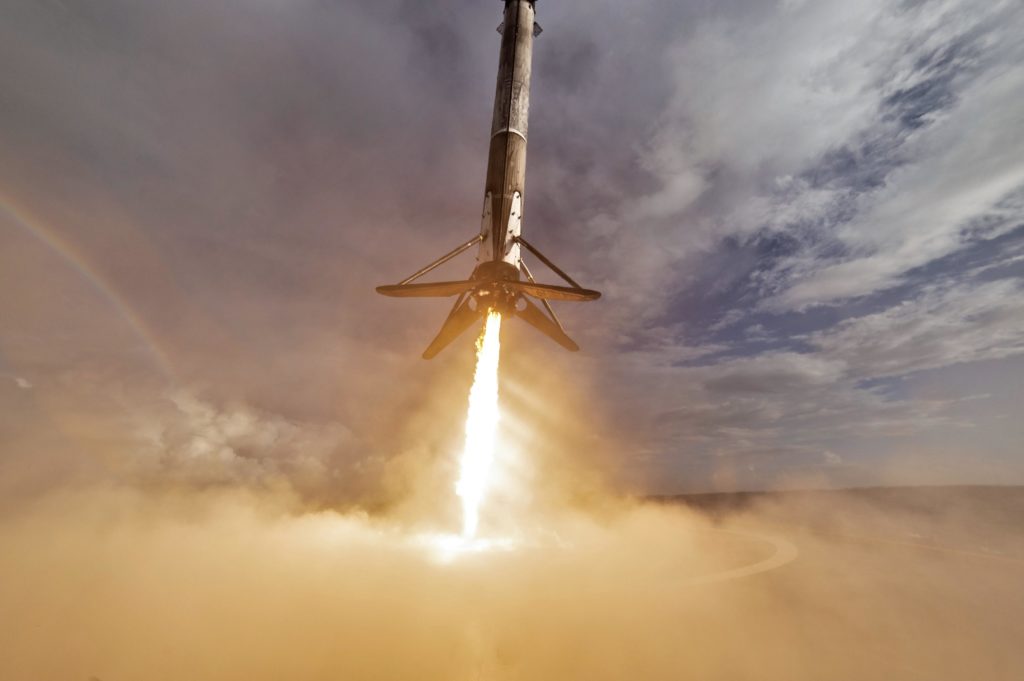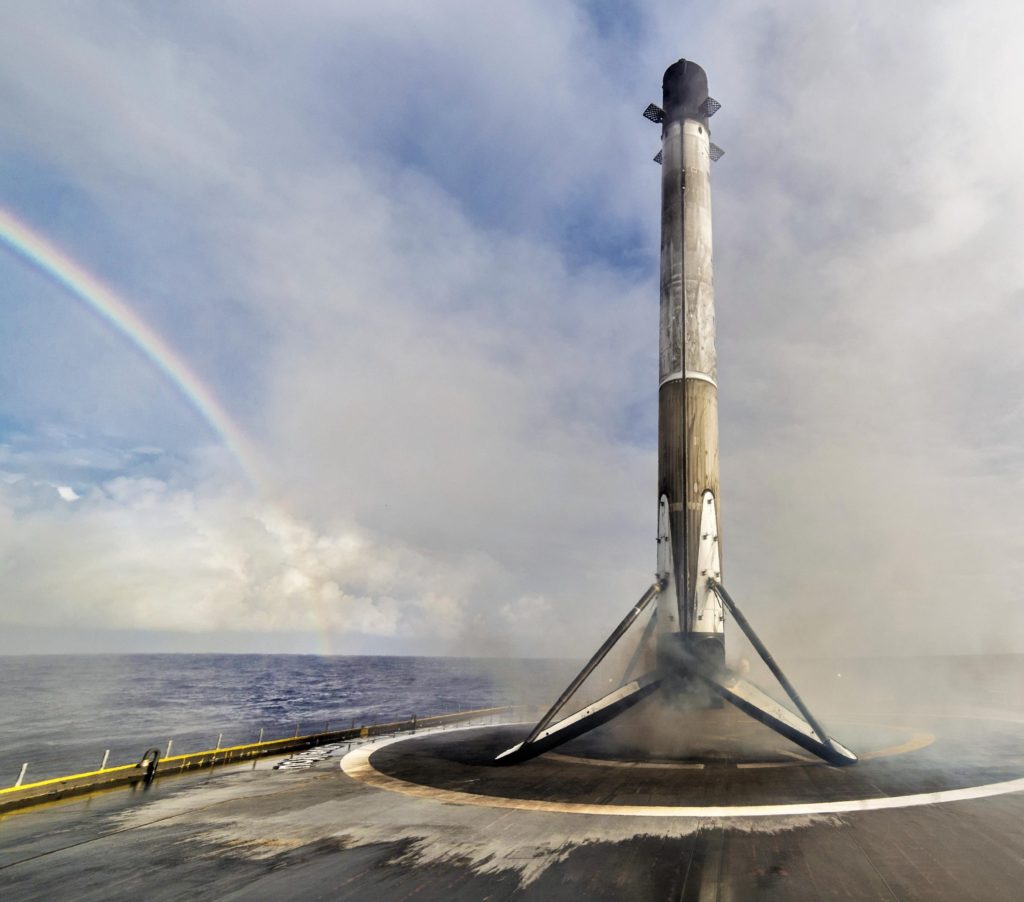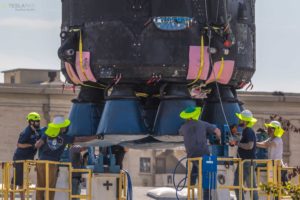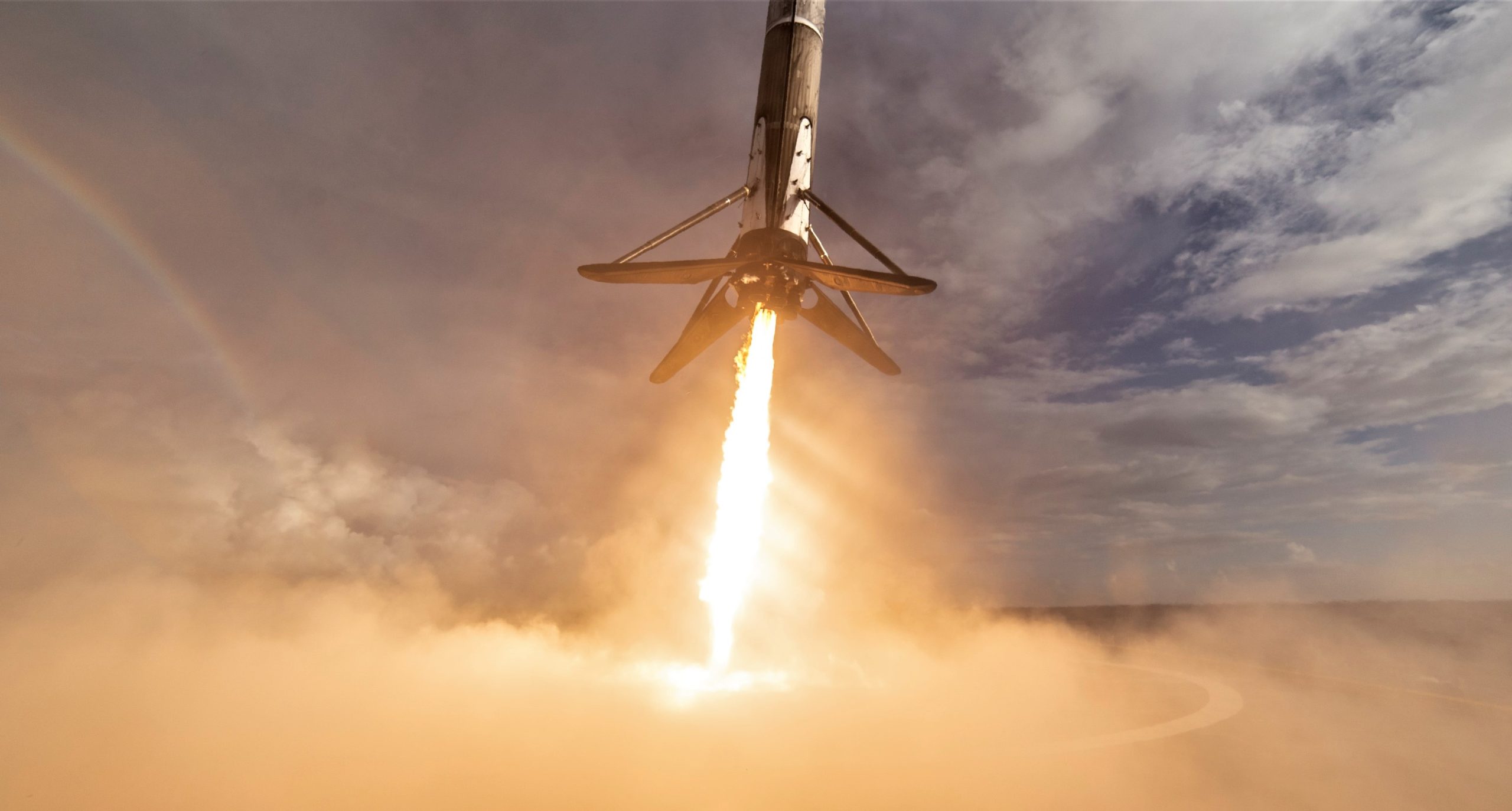
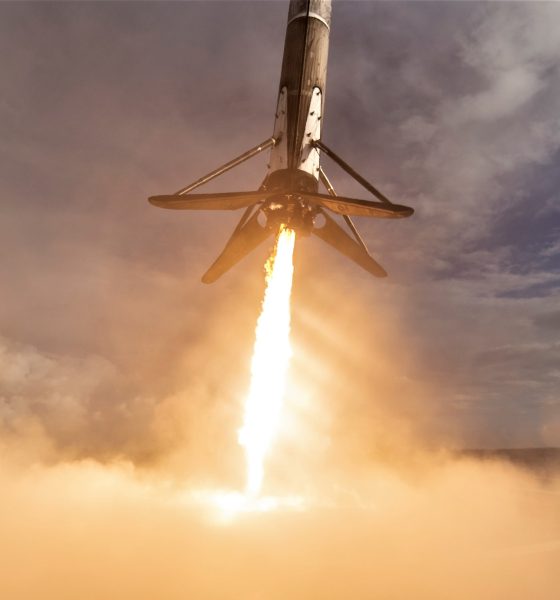
News
Follow a SpaceX Falcon 9 Block 5 booster recovery from start to finish [video]
All major aspects of SpaceX’s most recent Falcon 9 Block 5 booster recovery have been documented from start to finish, offering a solid glimpse into the work that actually goes into getting a rocket booster from the deck of a SpaceX drone ship to one of the company’s many hangars for inspections, repairs, and refurbishment.
Filmed by USLaunchReport, a SpaceX-focused nonprofit staffed by U.S. veterans, the group’s coverage of a variety of SpaceX events may not always offer the highest production quality, but the sheer tenacity and patience of those behind the cameras allow them to capture unique and interesting events that almost nobody else is keen to wait around for.
SpaceX Falcon 9 Block 5 booster sails into port aboard droneship OCISLY after successful reusehttps://t.co/zQtidwzvhp
— TESLARATI (@Teslarati) November 21, 2018
Over the course of four videos focused on SpaceX’s recovery of Falcon 9 Block 5 booster B1047, USLaunchReport offered good views of four major events that occur during all rocket recovery operations: the drone ship’s return to port, Falcon 9’s move from ship to shore, the booster’s landing leg removal (or retraction), and the booster’s transfer from a vertical to horizontal orientation and transport by road back to a SpaceX hangar.
Of Course I Still Love You arrives at Port Canaveral
As with all of Falcon 9’s drone ship landings, B1047 came to a rest on a station-keeping OCISLY several hundred miles east of the Florida coast, coincidentally landing directly in front of a giant rainbow cued by rain clouds, both visible in the background. In theory, B1047’s second landing should by no means be the rocket’s last: if Falcon 9 Block 5’s first stage upgrades are as successful as they hoped to be, the rocket could well see a productive life of 100 launches or more between now and BFR’s complete takeover.
- Falcon 9 B1047 approaches its second successful landing aboard OCISLY. (SpaceX)
- In a more perfect world, Falcon 9 would have been responsible for the rainbow. (SpaceX)
For at least the next 5-10 years, however, SpaceX followers will continue to be treated to spectacular Falcon 9 and Falcon Heavy booster recoveries, particularly the moment when each booster sails through the narrow mouth of Port Canaveral or Port of Los Angeles, offering spectators almost unbeatable views of just-landed SpaceX rockets.
SpaceX – Last Ten Miles To Dock.
Next Men at Work. B1047.2 https://t.co/6C4YDhUpJ6— Mike Wagner (@USLaunchReport) November 21, 2018
Falcon 9’s lift from ship to shore
Soon after the drone ship docks in port, SpaceX recovery technicians install a brace and lifting jig that attaches to Falcon 9’s booster interstage, using the same mechanisms that connect the first stage to the second stage prior to stage separation. The interstage’s mechanical actuators are strong enough to support – at a minimum – the entire weight of an empty Falcon 9 booster, allowing SpaceX to simply attach the jig and lift Falcon 9 off of the drone ship with any number of large but commercially available cranes.
Rather than directly lowering the rocket and allowing it to rest directly on its landing legs again, SpaceX technicians make use of a custom-built stand that acts as a sort of barebones, static replica of the mounts Falcon 9s are attached to at SpaceX launch pads. Structurally optimized to allow Falcon 9 and Heavy to be held down on the launch pad while operating at full thrust, a series of four solid-metal attachment points interface with those hold-down clamps, attach to Falcon 9’s four landing legs, and offer an easily accessible and structurally sound method of sitting a booster upright (sans legs) and maneuvering it during recovery operations.
- An excellent look at Block 5 booster B1048’s aft, showing off two of four launch clamp attachment points. (Pauline Acalin)
- A view of Falcon 9 resting on said clamp attach points. (Pauline Acalin)
Once Falcon 9 is sat stably atop its recovery stand, SpaceX technicians remove the rocket’s four landing legs and their associated telescoping deployment assemblies. While SpaceX has recently begun to attempt the in-situ retraction and stowage of Falcon 9 landing legs once returned to land, a number of experimental retraction attempts appear to have produced less than satisfactory results. This time around, the retraction jig was visibly stripped and SpaceX technicians did not attempt any leg retractions. However, those recovery technicians are now so experienced and familiar with the optimized procedures that Falcon 9 booster can go from port arrival to horizontal transport to a SpaceX hangar in just a little over 48 hours, and that trend continued with B1047.2.
Good observations by @USLaunchReport. The lifting cap was stripped of the leg retraction hardware, so SpaceX is presumably changing the design of the retraction system.https://t.co/WRwLNbLKqF
— Michael Baylor (@MichaelBaylor_) November 23, 2018
From | to __
Although Falcon 9 and Heavy rockets come into their prime once vertical, the rockets spend the vast majority of their lives horizontal, either in transport from facility to facility or stationary inside a SpaceX hangar, awaiting launch, undergoing integration, or being refurbished. Translating Falcon 9’s massive ~30-ton, 135-foot-tall (41m) booster from vertical to horizontal is a feat within itself, requiring the coordinated use of two large cranes, multiple technicians with guidelines, and one of several giant booster transport jigs owned by SpaceX.
SpaceX’s seasoned recovery technicians make it look easy, but the reality is in almost polar opposition. The fact that Falcon 9’s structure is built primarily of aluminum-lithium alloy tanks with walls maybe half a centimeter (~5 mm) thick certainly doesn’t make this process any easier, as even the slightest misstep or tank depressurization (Falcon 9 is almost always pressurized with nitrogen when horizontal) could structurally compromise the rocket and result in irreparable damage.
The cherry on top
A reliable crowdpleaser, the last critical step in any Falcon 9 or Falcon Heavy recovery is the booster’s careful transport – by road – from its port of call (or landing zone) to a dedicated SpaceX hangar (or factory), where the rocket can be far more thoroughly inspected, repaired, and maintained between launches. With Falcon 9 Block 5’s May 2018 introduction, the latter segment has become more important than ever before, as the upgraded rockets are already routinely conducting launches with as few as three months between them, bringing SpaceX closer than ever before to realizing a long-term aspiration of operating a fleet of rapidly and (relatively) easily reusable orbital-class rockets.
Often slowly driving just a few dozen feet from passing bystanders and traffic, this short few-mile trip from Port Canaveral to either Kennedy Space Center (KSC) or Cape Canaveral Air Force Station (CCAFS) is typically done with Falcon 9 boosters entirely uncovered, aside from nine small booties that cover their nine Merlin 1D engines. Without unique and easily missed moments like this, it might well be just shy of impossible to get fewer than several hundred feet away from an operational SpaceX rocket, certainly a luxury but one that would still be sorely missed.
All things considered, the crew at USLaunchReport ought to be thanked for their relentless patience and commitment to getting the shot. For those of us who mean to resist the tendency for SpaceX’s sheer inertia to rapidly make the extraordinary all but mundane, these long, highly detailed, and often esoteric videos will (hopefully) never get old.
For prompt updates, on-the-ground perspectives, and unique glimpses of SpaceX’s rocket recovery fleet check out our brand new LaunchPad and LandingZone newsletters!

News
Tesla’s six-seat extended wheelbase Model Y L sold out for January 2026
Estimated delivery dates for new Tesla Model Y L orders now extend all the way into February 2026.

The Tesla Model Y L seems to be in high demand in China, with estimated delivery dates for new orders now extending all the way into February 2026.
This suggests that the Model Y L has been officially sold out from the rest of 2025 to January 2026.
Model Y L estimated delivery dates
The Model Y L’s updated delivery dates mark an extension from the vehicle’s previous 4-8 week estimated wait time. A detailed chart shared by Tesla data tracker @Tslachan on X shows the progressions of the Model Y L’s estimated delivery dates since its launch earlier this year.
Following its launch in September, the vehicle was given an initial October 2025 estimated delivery date. The wait times for the vehicle were continually updated over the years, until the middle of November, when the Model Y L had an estimated delivery date of 4-8 weeks. This remained until now, when Tesla China simply listed February 2026 as the estimated delivery date for Model Y L orders placed today.
Model Y demand in China
Tesla Model Y demand in China seems to be very healthy, even beyond the Model Y L. New delivery dates show the company has already sold out its allocation of the all-electric crossover for 2025. The Model Y has been the most popular vehicle in the world in both of the last two years, outpacing incredibly popular vehicles like the Toyota RAV4. In China, the EV market is substantially more saturated, with more competitors than in any other market.
Tesla has been particularly kind to the Chinese market, as it has launched trim levels for the Model Y in the country that are not available anywhere else, such as the Model Y L. Demand has been strong for the Model Y in China, with the vehicle ranking among the country’s top 5 New Energy Vehicles. Interestingly enough, vehicles that beat the Model Y in volume like the BYD Seagull are notably more affordable. Compared to vehicles that are comparably priced, the Model Y remains a strong seller in China.
Elon Musk
NVIDIA CEO Jensen Huang commends Tesla’s Elon Musk for early belief
“And when I announced DGX-1, nobody in the world wanted it. I had no purchase orders, not one. Nobody wanted to buy it. Nobody wanted to be part of it, except for Elon.”
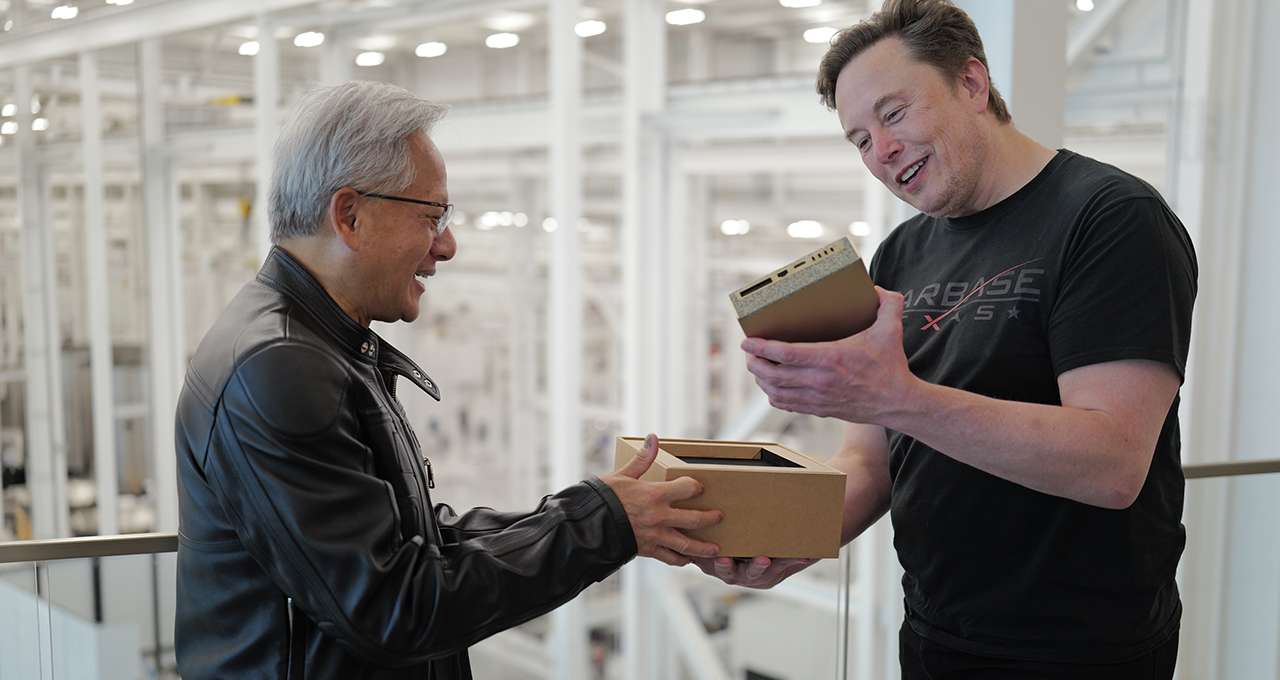
NVIDIA CEO Jensen Huang appeared on the Joe Rogan Experience podcast on Wednesday and commended Tesla CEO Elon Musk for his early belief in what is now the most valuable company in the world.
Huang and Musk are widely regarded as two of the greatest tech entrepreneurs of the modern era, with the two working in conjunction as NVIDIA’s chips are present in Tesla vehicles, particularly utilized for self-driving technology and data collection.
Nvidia CEO Jensen Huang regrets not investing more in Elon Musk’s xAI
Both CEOs defied all odds and created companies from virtually nothing. Musk joined Tesla in the early 2000s before the company had even established any plans to build a vehicle. Jensen created NVIDIA in the booth of a Denny’s restaurant, which has been memorialized with a plaque.
On the JRE episode, Rogan asked about Jensen’s relationship with Elon, to which the NVIDIA CEO said that Musk was there when nobody else was:
“I was lucky because I had known Elon Musk, and I helped him build the first computer for Model 3, the Model S, and when he wanted to start working on an autonomous vehicle. I helped him build the computer that went into the Model S AV system, his full self-driving system. We were basically the FSD computer version 1, and so we were already working together.
And when I announced DGX-1, nobody in the world wanted it. I had no purchase orders, not one. Nobody wanted to buy it. Nobody wanted to be part of it, except for Elon.
He goes ‘You know what, I have a company that could really use this.’ I said, Wow, my first customer. And he goes, it’s an AI company, and it’s a nonprofit and and we could really use one of these supercomputers. I boxed one up, I drove it up to San Francisco, and I delivered it to the Elon in 2016.”
The first DGX-1 AI supercomputer was delivered personally to Musk when he was with OpenAI, which provided crucial early compute power for AI research, accelerating breakthroughs in machine learning that underpin modern tools like ChatGPT.
Tesla’s Nvidia purchases could reach $4 billion this year: Musk
The long-term alliance between NVIDIA and Tesla has driven over $2 trillion in the company’s market value since 2016.
Elon Musk
GM CEO Mary Barra says she told Biden to give Tesla and Musk EV credit
“He was crediting me, and I said, ‘Actually, I think a lot of that credit goes to Elon and Tesla…You know me, Andrew. I don’t want to take credit for things.”
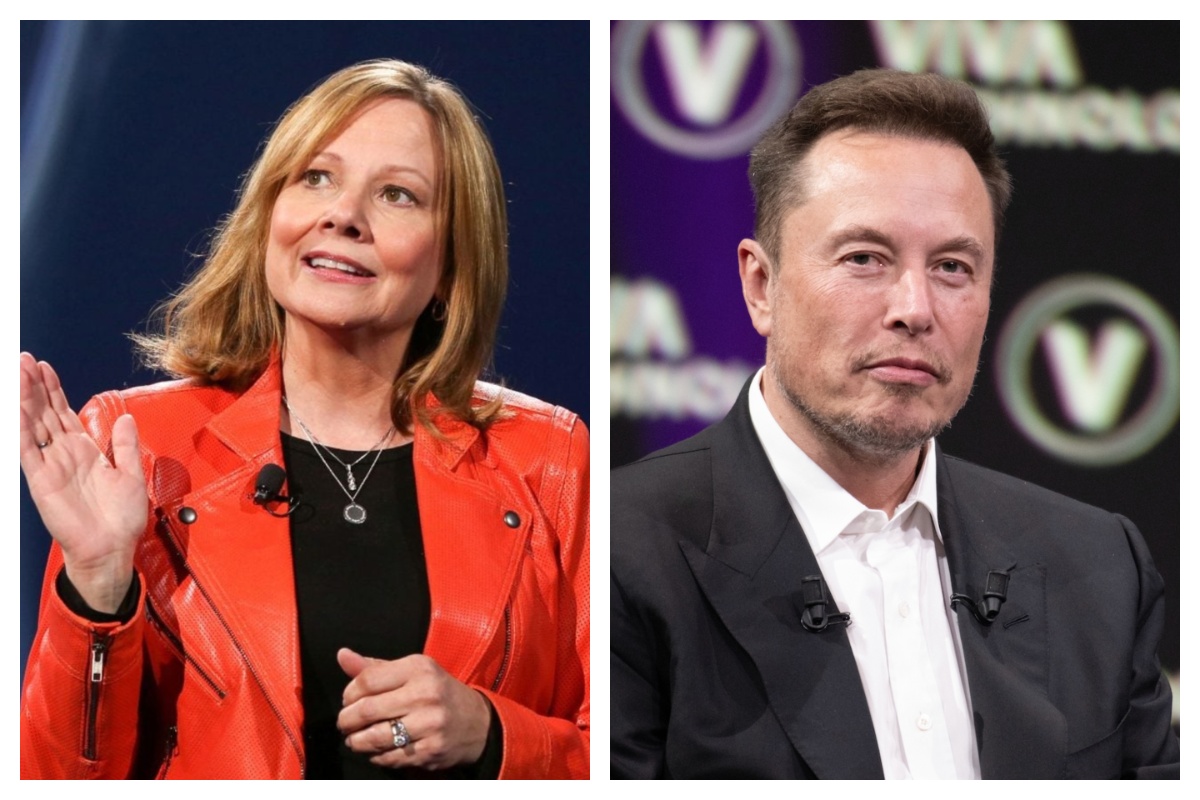
General Motors CEO Mary Barra said in a new interview on Wednesday that she told President Joe Biden to credit Tesla and its CEO, Elon Musk, for the widespread electric vehicle transition.
She said she told Biden this after the former President credited her and GM for leading EV efforts in the United States.
During an interview at the New York Times Dealbook Summit with Andrew Ross Sorkin, Barra said she told Biden that crediting her was essentially a mistake, and that Musk and Tesla should have been explicitly mentioned (via Business Insider):
“He was crediting me, and I said, ‘Actually, I think a lot of that credit goes to Elon and Tesla…You know me, Andrew. I don’t want to take credit for things.”
GM CEO Mary Barra said to Andrew Sorkin at the New York Times Dealbook Summit that she pulled President Biden aside and said Tesla CEO @elonmusk deserved the credit for EVs:
“He was crediting me, and I said, ‘Actually, I think a lot of that credit goes to Elon and Tesla,'” Barra… pic.twitter.com/OHBTG1QfbJ
— TESLARATI (@Teslarati) December 3, 2025
Back in 2021, President Biden visited GM’s “Factory Zero” plant in Detroit, which was the centerpiece of the company’s massive transition to EVs. The former President went on to discuss the EV industry, and claimed that GM and Barra were the true leaders who caused the change:
“In the auto industry, Detroit is leading the world in electric vehicles. You know how critical it is? Mary, I remember talking to you way back in January about the need for America to lead in electric vehicles. I can remember your dramatic announcement that by 2035, GM would be 100% electric. You changed the whole story, Mary. You did, Mary. You electrified the entire automotive industry. I’m serious. You led, and it matters.”
People were baffled by the President’s decision to highlight GM and Barra, and not Tesla and Musk, who truly started the transition to EVs. GM, Ford, and many other companies only followed in the footsteps of Tesla after it started to take market share from them.
Elon Musk and Tesla try to save legacy automakers from Déjà vu
Musk would eventually go on to talk about Biden’s words later on:
“They have so much power over the White House that they can exclude Tesla from an EV Summit. And, in case the first thing, in case that wasn’t enough, then you have President Biden with Mary Barra at a subsequent event, congratulating Mary for having led the EV revolution.”
In Q4 2021, which was shortly after Biden’s comments, Tesla delivered 300,000 EVs. GM delivered just 26.
